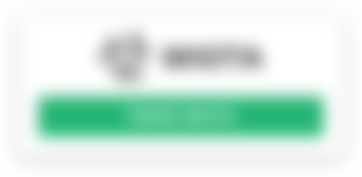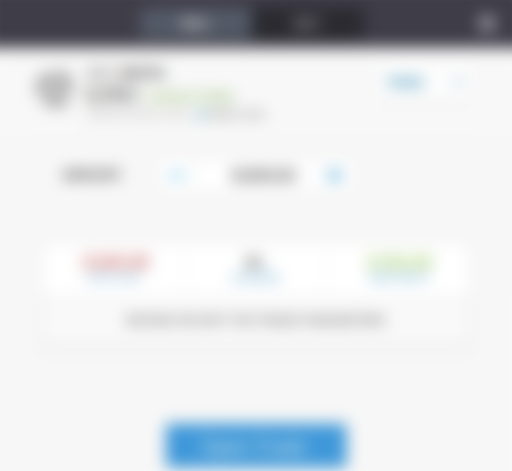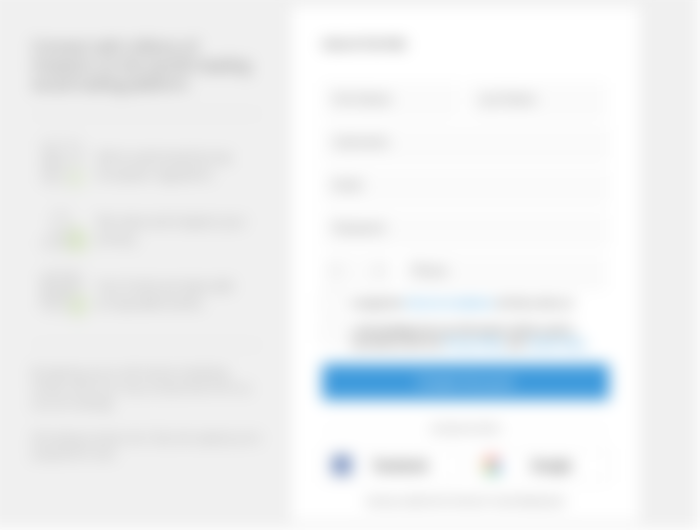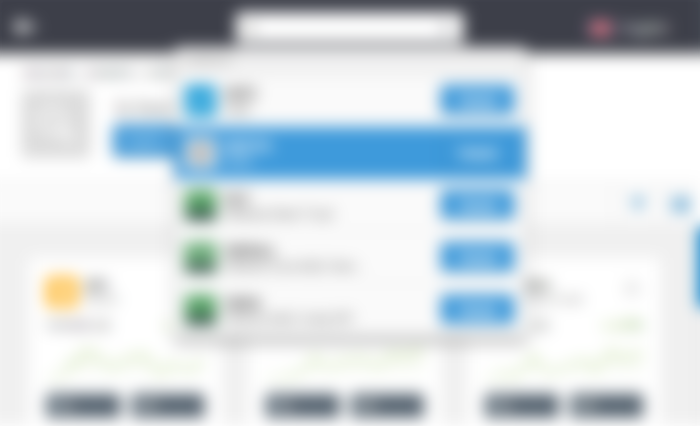IOTA Trading 2021 | Learn How To Trade MIOTA
Are you planning to venture into IOTA trading? Here is a definitive step by step guide teaches you everything you need to know about IOTA trading and reviews the best crypto broker.
The cryptocurrency market is largely predominated by digital assets based on blockchain technology. IOTA is, probably, one of the biggest alternatives available. This unique cryptocurrency was designed to address the inefficiencies of first-generation blockchain networks.
Although IOTA has a different framework to other blockchains in the market, the concept of trading this cryptocurrency remains the same. That is to say, you can trade IOTA against fiat currencies such as the US dollar, as well as against other crypto-assets like Bitcoin.
If you are interested in trading IOTA yourself, you have arrived at the right place.
Our How to Trade IOTA 2021 Guide will tell you all you need to know about speculating on this innovative asset. We’ll walk you through the process of how to trade IOTA from start to finish - including important information on orders, risk-management, and finding a broker.

How to Trade IOTA in 5 Easy Steps
This guide on how to trade IOTA will break everything down in Layman’s terms so that you do not trade blindly. But, if you don’t quite have the time to read it all of the ways through, this is what you need to do to trade IOTA now.
Step 1: Open an account with a regulated crypto broker
Step 2: Funds your account
Step 3: Choose how much IOTA you want to trade
Step 4: Buy MIOTA (go long) or sell MIOTA (go short)
Step 5: Confirm your trade
What is IOTA Trading?
IOTA (MIOTA) is a revolutionary digital currency that is designed for the Internet of Things (IoT). The cryptocurrency bases itself on the Tangle network, which introduces a new way of facilitating transactions through the IoT.
The technology is intended to be faster, cheaper, and safer than other blockchain systems in the market.
As a tradable asset, the value of IOTA fluctuates throughout the trading day - often, even within seconds. A range of factors can affect the price of IOTA - including supply and demand, internal governance, technological developments, mining, and regulations imposed on various markets.
Ultimately, when considering how to trade IOTA, you aim to speculate on what the price of the digital asset will be in the future.
As more and more people invest in IOTA, you will see an increase in its price. In inverse, if there are more sellers than buyers, consequently, the price will fall.
When you are able to predict these market fluctuations accurately, your trades will return a profit.
Here is an example that demonstrates how to trade IOTA:
Let's say IOTA is valued at $0.3752
This is represented as MIOTA/USD at most online cryptocurrency platforms.
You believe that IOTA is undervalued, so you place a $1,000 buy order.
After two months, the price of IOTA stands at $0.4000
This depicts a 6.60% increase in the value of the digital asset.
Delighted with your gains, you close the trade by placing a sell order.
As you can see from the example above, IOTA increased in value from $0.3752 to $0.4000, leaving you with a profit of $66 on your $1,000 stake.
In other words, if you speculate the market correctly, there is a significant profit potential in trading IOTA. On the contrary, if you speculated incorrectly, this trade would have gone entirely different - leading to losses instead of profits.
Considering these implications, it is crucial that you are knowledgeable about the ins and outs of the cryptocurrency market before you start training IOTA.
How Does IOTA Trading Work?
In terms of trading, cryptocurrencies draw many parallels to conventional financial instruments.
As such, if you already know your way around trading the likes of stocks and commodities, you will have no trouble familiarising yourself with the ways of IOTA trading.
However, the cryptocurrency market also has the reputation of being largely volatile. As such, you first need to know what your trading options are before you get started.
For newbies, we will cover some of the most important IOTA trading fundamentals in this section.
IOTA Trading Price Movements
These days, you can find MIOTA listed on most cryptocurrency trading platforms. The key to IOTA trading lies in understanding what drives the price of the digital asset.
If the general feeling of IOTA is to go long, this will show an overall increase in the value of the digital asset. On the other hand, if the majority of traders are going short on IOTA, this will be reflected in its price as well.
As you are likely to notice, the price of IOTA might vary slightly at different trading platforms. At one site, an online broker might quote you $0.367, whilst at another, IOTA might be priced at $0.370.
However, for traders, this small difference is nothing to be concerned with, nor will it affect your potential to profit in any way.
IOTA Trading Pairs
We mentioned earlier in the introduction that IOTA can be traded against both fiat currencies as well as other cryptocurrencies.
Let us take a closer look at crypto-fiat pairs first.
When you see the pair MIOTA/USD, this means that the MIOTA is the 'crypto,' and the US dollar is the 'fiat.'
Among fiat currencies, IOTA is most commonly traded against the USD.
That said, some online brokers also allow clients to trade IOTA against other fiat currencies such as the British pound (MIOTA/GBP), Euro (MIOTA/EUR), Canadian dollar (MIOTA/CAD), or even the Japanese yen (MIOTA/JPY).
When you trade IOTA-fiat pairs, you also get the benefits of high liquidity and tight spreads in the market. As such, novice traders will find it best to stick with a crypto-fiat pair.
Furthermore, trading against a fiat currency makes it much easier for you to predict the future value of the IOTA coins.
In contrast, when you trade IOTA against other cryptocurrencies, you are speculating on the exchange rate of two competing coins. New traders might find this more challenging as you need a sound knowledge of both the digital assets in question.
Summing up on trading pairs - regardless of whether you choose to trade IOTA against a cryptocurrency or a fiat-asset, you must do your homework on the related markets in order to speculate correctly.
Long or Short-Term Trading
One of the first steps in deciding how to trade IOTA is to choose the financial instrument that will best suit your trading goals.
For instance, if you believe that the Internet of Things and the Tangle project has high potential in the future, you can consider investing in IOTA for the long-term. This means you will be buying IOTA coins and storing them in a crypto-wallet.
Crypto-traders call this strategy "HODLing" - where you hold the asset in your wallet for weeks, months, or even years - until it becomes worthwhile for you to cash out.
In comparison, short-term strategies require you to have sound knowledge of technical analysis to aid your decision-making process. For beginner traders, reading charts and evaluating them will not be an easy undertaking.
As such, a "buy and hold" strategy will be more suited until you learn the ropes of shorter-term cryptocurrency trading. This way, you do not have to concern yourself with the short-term volatility of the market.
In case you intend to try your hands at short-term trading, it is best to go for highly liquid pairs such as MIOTA/USD or MIOTA/BTC.
Trade and Own IOTA
When you adopt a long-term investment strategy, we suggest that you buy IOTA coins directly through an online broker.
If you are searching for a reputable and regulated online broker, look no further than eToro. The social platform gives you the ability to trade IOTA, among other cryptocurrencies, 100% commission-free.
The broker is regulated in several countries and has 13 million clients trading on their platform. In addition, you can also store IOTA coins in the eToro wallet as long as you like, at no extra cost.
If you are a beginner, you can also benefit from eToro's 'Copy Trader' feature and learn strategies from seasoned professionals.
As we mentioned, the "buy and hold" strategy is a great way for novice traders to enter the cryptocurrency market. If interested, eToro can give you access to over 90 crypto-pairs to build a diversified trading portfolio.
IOTA Trading
For those who prefer to trade IOTA on a short-term basis - you will be placing trades more frequently using 'day trading' or 'swing trading' strategies.
If that's the case, you can look for online brokers who offer IOTA CFDs (Contracts for Differences).
Before we go any further, you should know that due to the added risk involved, all CFD instruments are prohibited in the US. Although in the UK you will have no difficulty accessing CFDs on traditional trading assets, crypto CFDs are no longer legal.
Here is an overview of what CFDs are:
A CFD is a derivative that tracks the real-world price of the financial asset - in this case, IOTA.
CFDs allow you to apply leverage on your trades.
Traders can also take advantage of both the rising and falling markets - by going "long" or "short" on IOTA.
If you are in a country where CFD trading is restricted, you can do so only through a third-party cryptocurrency exchange. Bear in mind that using these platforms always adds more risk to your endeavours, as you will be trading in an unregulated space.
On top of that, you will not be given the convenience of adding funds to your trading account using a fiat currency such as US dollars.
Instead, you will most likely have to trade MIOTA against USDT rather than the actual US dollar. For those unaware, USDT is a cryptocurrency with its value equivalent to that of 1 USD.
Altogether, the process of trading at unregulated platforms should be avoided at all costs.
Would You Consider Trading IOTA (MIOTA)?
How to Trade IOTA Online - Setting up a Trade

Perhaps the most important lesson of how to trade IOTA is that of ‘orders’. After all, it is through orders that you communicate your position with your broker.
If you have traded in some capacity before - you will already know your way around orders. No matter the financial asset - be it stocks or forex - these orders remain the same.
In simple terms, the order you place tells the broker the type of action they should execute on your behalf.
Below we list the most useful orders while trading IOTA.
Buy or Sell Order
A buy/sell order is the most basic of trading orders and is mandatory to open your position in the market.
In summary:
You place a buy order if you speculate that the price of IOTA is going to rise.
You place a sell order if you speculate that the price of IOTA is going to fall.
Traders use both these orders on each and every IOTA trade.
For instance, if you open an IOTA trade using a buy order, you will close it with a sell order. In reverse, if you open your position with a sell order, you will close the trade with a buy order.
Entry Price
The buy and sell orders are just the basics of order types. To make the most of the market, you need more IOTA trading orders in your arsenal.
When you place an order on IOTA, your online broker will ask you without exception whether you want a market order or a limit order. These orders determine what your entry strategy is:
Market Order
Let's say IOTA is priced at $0.35. You want to trade IOTA at this price - so you place a market order. Your broker will execute this order for you immediately or at the nearest price available. However, due to price fluctuations, you might see a slight difference in the price that your order is actually executed at.
Limit Order
Again, let's say the current market price of IOTA is at $0.35. But you do not want to open a trade until IOTA increases to $0.37. In this case, you set up a limit order at $0.37. Your broker will keep the order pending for you until the price point is realized or you cancel it manually.
As you would imagine, a large portion of traders prefer using limit orders while trading cryptocurrencies - as they allow for more control over your position. That said, if you want to open your IOTA trade immediately, a market order is the way forward.
Exit Strategy
Now that you know how to enter the market while trading IOTA, it is time to look into the exit strategies. This is where 'take-profit' and 'stop-loss' orders come into play.
Let us offer you an explanation of each order type:
A take- profit order allows you to lock-in your profit at a particular point. For example, if your target profit on your IOTA trade is 3%, you will create a take-profit order at 3% above or below your entry price. Your broker will automatically execute the trade if the price of IOTA meets your specified take-profit price levels.
In terms of stop-loss orders, they allow you to limit your losses on IOTA trades. For instance, if you want to avoid losing more than 1% - you create a stop-loss order at 1%. Your trade will be automatically closed if the price of IOTA hits your specific stop-loss price point.
Allow us to help you understand this concept a bit more with an example:
Let's say you are trading MIOTA/USD at an entry price of $0.3400.
Believing that the value of MIOTA will rise, you place a buy order.
Wanting to cash out at 3% profit, you set a take-profit order at $0.3502.
Meanwhile, you also do not want to risk losing more than 1%.
Hence, you place a stop-loss order at $0.3366.
In this trade, there are two potential outcomes:
If the price of MIOTA rises to $0.3502, your take-profit order will kick in, and the trade will be closed at 3% profit.
If the price of MIOTA falls to $0.3366, your stop-loss order will be executed, and your trade will be closed at a 1% loss.
It is common for traders to specify both take-profit and stop-loss orders on a single trade. No matter which direction the market moves, your trade will be closed automatically at a price you specified.
How to Make Money Trading IOTA
Using the aforementioned trading orders removes the need for you to constantly watch the market and time your trades accordingly. That said, these trading orders alone will not suffice if you are learning how to trade IOTA for the first time.
For that, you also need to have a firm grip on the other factors that will determine whether or not you turn a profit on your IOTA trade.
Here is a list of the other important considerations while trading this digital currency.
1. Stake
When trading IOTA, you also need to specify your stake - which is the amount of money you are willing to risk on the digital currency. In simple terms, the higher your stake, the higher your profits or losses will be.
To give you a better idea - if you stake $500 on IOTA and make a profit of 1% - this translates to a gain of $5. In comparison, if you put up a stake of $1,000, your profit from the trade will be $10.
It might strike that the obvious method is always to stake the higher amount. However, when you have money going in and out of your trading account, it can be challenging to keep track of your risks.
That is why many traders apply a 'bankroll management strategy' when trading IOTA and other financial assets.
In a few words, you weigh how much you can afford to risk on IOTA from your available trading funds. Many traders choose not to stake more than 2% of their trading account balance at a time.
For instance: if you have $5,000 in your trading account - you will not stake more than $100 on one IOTA trade.
Fortunately, there are several online brokers that allow you to trade cryptocurrencies with small stakes. One such example is eToro, where you can trade IOTA for a minimum stake of just $25.
As you can see, it is thus easier to employ a personal bankroll management strategy that is best suitable for your budget.
2. IOTA Trading Leverage
If trading IOTA CFDs is legal where you live, you can maximize your profits by applying leverage.
However, do not forget that in case you make the wrong prediction on the future value of IOTA, the same leverage can also magnify your losses.
To illustrate the point:
Say you place a $2,000 buy order on IOTA/USD.
You decide to apply leverage of 1:2.
IOTA increases by 10% in value.
With no leverage, your profit on this trade comes to $200
With leverage of 1:2, your gains will be magnified to $400.
It doesn't take an expert to tell you that leverage can significantly increase your profit potential.
As such, you will see many online brokers offering leverage as high as 1:100 to entice you in. But, make sure that if you trade with leverage, you always do so via a regulated trading platform.
If you don’t, you are entrusting your money with a broker that doesn’t take investor protection seriously.
Fees to Trade IOTA Online
Regardless of what IOTA trading pair you choose or what strategy you deploy, you will be bound to pay fees to your online broker.
Ultimately, online brokerages are business establishments that need to turn a profit.
Therefore, it is always recommended that you check their list of fees before you open an account.
IOTA Trading Commission
Most online brokers you come across will charge you a trading commission. This is calculated as a variable rate against the value of your IOTA order.
To give you an idea of what you could be paying: cryptocurrency trading platform Coinbase charges a 1.49% commission charge on every trade action. This means you will be paying a 1.49% fee twice, once while opening your trade and then when you close it.
At the other end of the scale is eToro, where you will be able to trade all of its supported cryptocurrencies at zero-commission.
IOTA Spread
While the commission can be counted as a direct fee, the spread is more of an indirect fee you pay for trading IOTA. The spread is measured as the difference between the ask price and the bid price of the financial asset in question.
If the buy and sell prices have a wider gap, you will end up paying more to your online broker. What you want is a tighter gap that will allow you to keep more of your profits for yourself.
For instance, if your online broker charges you a 2% spread, you are instantly entering the market at a 2% loss. This implies that you need at least 2% in gains to break even on this IOTA trade. Any earnings beyond this 2% mark will only be accounted for as your actual profit.
Other IOTA Trading Fees
Broker charges do not end with commissions and spreads.
On the contrary, you should also keep an eye out for other commonly charged fees:
Deposits/Withdrawals: Some brokers charge you transactional fees for processing deposits and withdrawals. At Binance, a 2% fee is involved on every debit/credit card payment. In comparison, eToro allows you to deposit funds at a mere 0.5%, and only if you add funds in a currency other than the USD.
Inactivity Fee: If you do not meet the minimum activity on your account, you might also be liable to pay an inactivity fee. Usually, brokers wait until 12 months of no activity to charge you this fee.
Overnight Fee: This fee is essentially the interest you pay your broker to keep your CFD positions open overnight. You will be charged an amount for each day you leave the trade open. This is also charged on non-CFD positions when leverage is applied.
All in all, eToro offers you some of the best market rates when it comes to trading. You will pay no commission to trade IOTA, and in addition, if you are funding your account in USD, there is no deposit fee.
Ready To Start Trading IOTA (MIOTA)?

How to Trade IOTA 2021 - Step-by-Step Walkthrough
Are you ready to start trading IOTA from the comfort of your own home?
All you have to do is follow the steps below to set up your trading account, and you will be good to trade IOTA right away!
Step 1: Choose an IOTA Trading Platform
The first thing to do is find a trustworthy online broker for you to trade IOTA at. If you start a search now, you will be astonished by the sheer number of online brokers out there.
It is thus imperative that you choose wisely, as you will be entrusting your money to your trading platform.
Taking this into account, we have jotted down the key points you need to consider when choosing an IOTA broker:
Regulation: Is the online broker regulated by a well-known, authoritative body like the FCA, CySEC, or ASIC?
Fees: What commissions, spreads, and other trading fees does the broker charge?
Payments: Which payment methods are available on the trading platform?
Minimum Deposits: How much is the minimum deposit amount and stake required for you to start trading IOTA?
IOTA Pairs: Which fiat and digital currencies can you trade IOTA against?
Trading Platform: Is the trading platform easy to use and friendly enough for investors of all levels?
Mobile App: Does the trading platform offer a mobile application?
If your search for the ideal online broker is taking too much time and effort - we recommend that you check out eToro. To give a glimpse of what you are in for at eToro, here is a list of its most impressive features:
The trading platform holds licenses from the FCA, ASIC, and CySEC. US residents can trade with ease, knowing that eToro is registered with FINRA.
eToro offers not only commission-free trades but also competitive spreads on all available financial assets.
You can process payments through bank transfers, credit/debit cards, and also use e-wallets such as PayPal.
You can start trading IOTA at a minimum stake of just $25.
Step 2: Open an IOTA Trading Account

Go to the website of your chosen broker and sign up.
In order to open your account, you will have to provide your personal information. This includes your name, address, date of birth, and contact details.
If the platform complies with KYC regulations (which it should), you will also have to upload a copy of your photo ID. This can be your passport or driver's license.
At eToro, the identity verification is done using automated ID tech, meaning you will be able to start trading almost instantly.
Step 3: Deposit Funds
With your account confirmed, you can fund your trading account.
When it comes to payments, most brokers will offer you an assortment of methods, ranging from bank cards to third-party e-wallets. Note, if you choose a wire transfer, it will take a few days to process your deposit.
Step 4: Choose IOTA Trading Market

With your funds ready, you can choose which IOTA pair you want to trade. You can perform a simple search at eToro, and the platform will list out the available IOTA trading pairs for you to pick from.
Step 5: Place IOTA Trade
Now, all that is left for you is to place your trading orders. At this point, you might want to scroll up and take a quick recap on the order types we discussed in the section "Setting up Trading Orders."
When you are confident, you can go ahead and set up your first IOTA order. Based on your speculation, place a buy or sell order. Clicking on "Open Trade" will execute your IOTA trade.
You have just placed your first IOTA trade successfully. If you are using eToro, your trade is 100% commission-free!
How to Trade IOTA Guide - The Verdict
If you are feeling inspired to start trading IOTA, make sure that you choose a regulated online broker.
eToro gives you the ability to trade cryptocurrencies against both fiat as well as other digital assets. You will find the platform easy-to-use, with commission-free trading and a cryptocurrency wallet to store your IOTA coins.
Ultimately, by reading guides like ours and following the market closely, you can master the art of trading IOTA from the comfort of your home.



